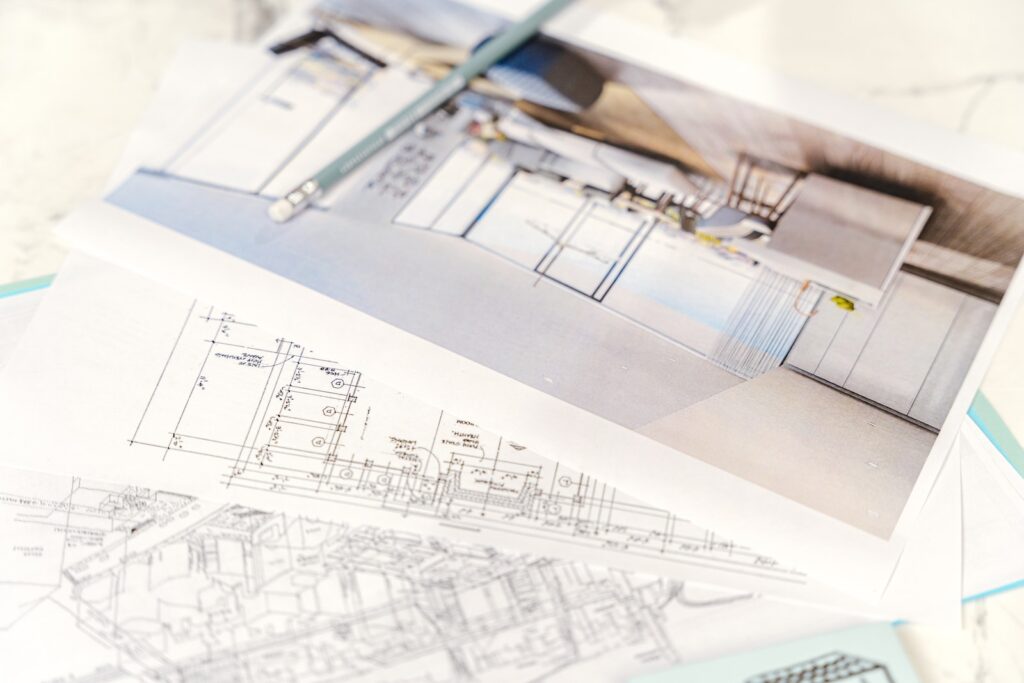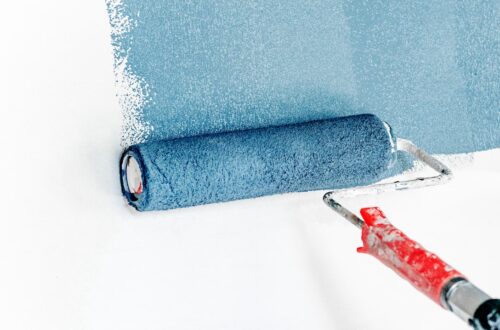Maximizing Space in a Small Coastal Home
Coastal homes are notorious for their large rooms and airy open spaces, with high ceilings and large windows opening to a patio with a swimming pool or to the beach.
However, not everyone can afford to live in a perfect big coastal home. And some of us live in small urban (and rented) apartments.
So, one of the biggest challenges many coastal home lovers face is maximizing the space to create a functional, livable, bright, and airy beach-style home wherever we are.
Whether you’re dealing with small bedrooms, cramped rooms, lack of storage, or awkward spaces, figuring out how to make the most out of every inch of your home can be a daunting task.
But fear not!
With a bit of creativity and careful planning, even the tiniest home can become a spacious and comfortable coastal-like retreat. You can create an inviting room by maximizing space through thoughtful design choices and storage ideas.

The Challenges of Small Coastal Homes
Sometimes our homes come with unique layouts and features that may pose challenges when it comes to maximizing space.
An example is the open-concept layout. While this creates an airy ambiance, it also means there are fewer walls to add storage or divide spaces.
In addition to open-concept layouts, many homes also have limited closet space or awkwardly shaped rooms. These factors can make it difficult to store all your belongings in an organized manner while still maintaining a clean and clutter-free aesthetic so crucial in a coastal home.
How to Make a Small Coastal Home Look Bigger
Making the most out of small spaces is crucial for creating an airy, breezy comfortable environment in your coastal home. When you’re dealing with a limited space, every inch counts!
By carefully considering each decor decision and storage solution choice, you’ll be able to maximize functionality without sacrificing style.
In short, maximizing space in your home is not only a practical solution – it’s also a way to create a beautiful and functional living space for you and your family.
1. Use Light Colors to Create an Illusion of More Space
White walls, white furniture, light blue or sandy fabrics, light floor.
One of the easiest ways to make a small space feel larger is by using light colors on walls and floors. White reflects light making the room feel brighter and more open than it actually is.
2. Use Glass and Mirrors
Choose furniture with glass and shiny materials, like a glass top coffee table, glass or acrylic side tables.
Also, add large mirrors that can reflect the natural light. But avoid facing the mirrors straight to a window with a busy view or wall, otherwise you’ll be duplicating the clutter and making the room smaller.
3. Let Light In
Natural light can also help create the illusion of more square footage in your home. Optimize natural light by leaving windows unobstructed by heavy curtains or window treatments whenever possible.
If you have privacy concerns, consider adding sheer curtains or blinds that can be opened during the day to let in light. When you maximize natural light, your home will feel airy, open, and more spacious.
4. Stick to the Essential Furniture and Accessories
When it comes to decorating a small space, choosing the right size and amount of furniture is very important.
Stick to the needed furniture for the room you’re decorating.
If you already have a nice-sized bathroom sink countertop with storage, maybe you don’t need a vanity table in the bedroom. You can store your makeup, perfumes, and brushes in the bathroom.
If you already have space in the kitchen to store all your dishes, maybe you don’t need a china cabinet in the dining room if it’s too small.
Maybe you have things that can be stored together with other items: you can store media gadgets and workout equipment in the same cabinet or closet.
Less is more. You don’t need to sacrifice style, but consider the space you have for the amount of furniture you’d like to have and be reasonable.
5. Declutter
On the same note, minimize the number of accessories.
Keep surfaces to a minimum. Use trays to gather small knick-knacks.
Store items that don’t fit the style or serve no purpose, if it’s too much. Go with the “rule of three”.
6. Leave Space Between Furniture and Free the Walking Areas
You don’t need to choose small-size furniture when decorating a small room. Actually, lots of small pieces will make the room look lost and cluttered which does not go well with Coastal Chic or Hamptons styles.
What you need to consider is the space around the furniture and near the passage areas to make sure the room breathes and everyone can walk around easily.
Leave some inches between the side tables and the sofa or the bed and the nightstands; leave enough space for legs between the sofa and the coffee table. And a good amount of space between areas, such as the dining area/living area; the reading area/sitting area.
7. Choose Multi-functional and Space-saving Furniture
When decorating a small room, choosing furniture that is multi-functional is a game-changer.
Look for pieces that can be used for more than one purpose, such as a storage ottoman that can double as a coffee table or a sofa bed for guests. Balancing style and functionality is key.
Another way to save space is by using furniture with built-in storage.
For example, instead of having a separate bookshelf and TV console, choose a unit that has both features. Not only it saves floor space but it also creates a simple appearance in your home.
In the bedroom, using under-bed storage containers or opting for a bed with built-in drawers can free up closet space.
8. Utilize Vertical Space with Shelving
When you’re working with limited square footage, it’s essential to think vertically.
Floor-to-ceiling shelves are an excellent way to utilize vertical space while also creating visual interest in your home.
You can use them to display books or your coastal decorative objects (to a minimal…).
These are ideal for compact rooms with limited floor space.
9. Maximize your Closet and Cabinets Storage
Closets are often one of the first things that people sacrifice in order to make room for other necessities.
However, there are plenty of creative ways to maximize closet space!
Investing in organizers such as shelf dividers, hanging organizers, and shoe racks can create more usable storage space within a closet.
Hanging clothing on slim hangers rather than bulky plastic hangers takes up less room overall.
If you need more hanging space than your closet allows – consider adding a second rod below your existing one! It’s easy enough to install – just by purchasing an inexpensive closet rod bracket set at any store that sells hardware.
10. Hang your Outdoor Gear and Equipment
Coastal living often includes outdoor activities and water sports, which can lead to the accumulation of equipment such as surfboards, paddle boards, or kayaks.
Storing these items can be a challenge especially in smaller homes.
Installing wall-mounted or ceiling-mounted racks are an easy way to free up floor space.
Place bins or baskets near an entryway or mudroom to easily corral beach towels, balls or frisbees, surfing accessories, when you get home.
Navigating Awkward Spaces
Some homes have unique architectural features that can make it difficult to utilize all the available space. However, there are a few tricks to making the most out of those awkward nooks and crannies.
1. Make use of Awkward Nooks, Corners, and Alcoves
Awkward spaces such as nooks, corners, and alcoves can be transformed into a functional part of your home with a little creativity.
For example, you can add shelving or built-in storage units to a corner or alcove to turn it into a display area or storage space for books and decorative items.
If you have an odd nook in your bedroom that doesn’t seem to serve any purpose, consider turning it into a cozy reading area by adding some pillows and blankets.
2. Create Custom-Built Furniture to Fit Unique Spaces
If you have a particularly challenging space in your coastal home that requires custom furniture solutions, consider hiring a carpenter or furniture maker who specializes in creating custom pieces.
Custom-built furniture can fit perfectly into an odd-shaped room or corner while still providing maximum functionality.
For example, if you have an oddly shaped living room where traditional sofas won’t fit properly, consider having a sectional sofa made specifically for your space. A custom-built sofa will not only fit perfectly but will also provide additional storage options such as built-in drawers or hidden compartments.
3. Add Sliding Doors or Curtains to Divide Open Areas
If you live in an open-concept layout coastal home where there are fewer walls dividing the different rooms, consider incorporating sliding doors or curtains to divide the space.
Sliding doors can be a great addition to separate the living room from the bedroom, or even to create a home office space within a larger room.
Maximizing space in coastal homes requires creative solutions and out-of-the-box thinking. By utilizing awkward spaces, custom-built furniture, and sliding doors or curtains, you can transform your small coastal home into a functional and stylish oasis.
Putting it All Together
Living in a coastal home is all about maximizing the beautiful surroundings while still maintaining a functional, bright, clutter-free space.
With careful planning and by following these tips and tricks for small spaces, you can achieve just that!
Remember to keep your furniture multi-functional while giving priority to storage solutions that are practical yet stylish.
One crucial thing for homeowners to remember is that personalization is key when it comes to creating a functional yet stylish home in any size space, but especially when dealing with tight quarters! As long as you prioritize what matters most, comfort and functionality, you won’t miss out on anything important when living by the coast!










